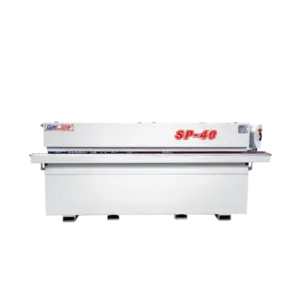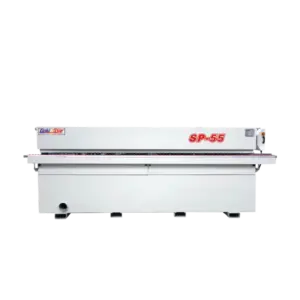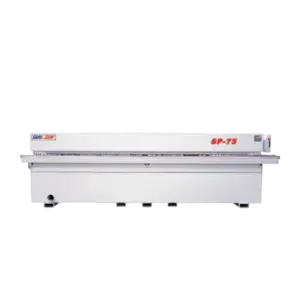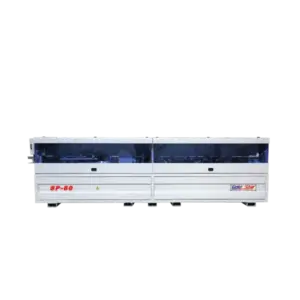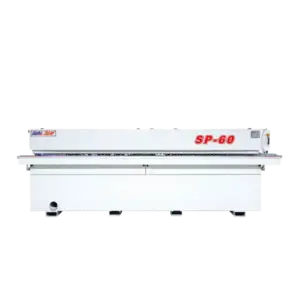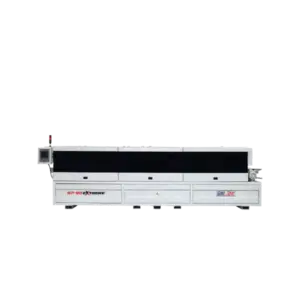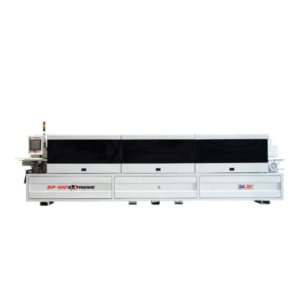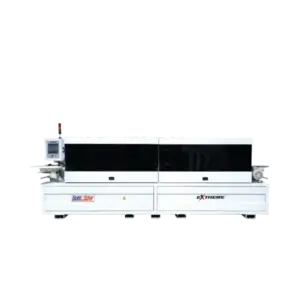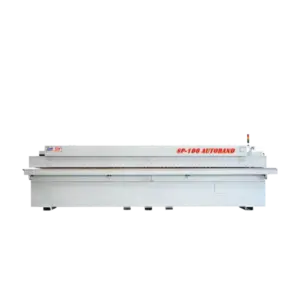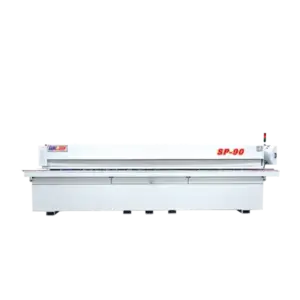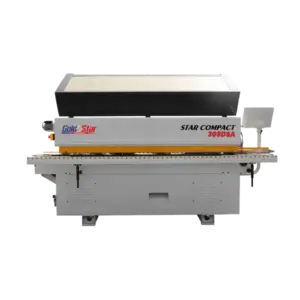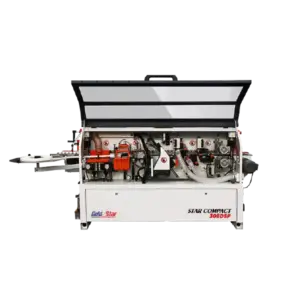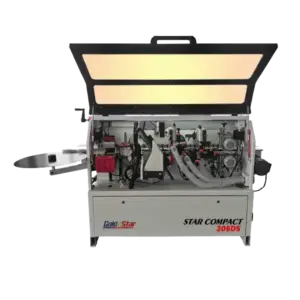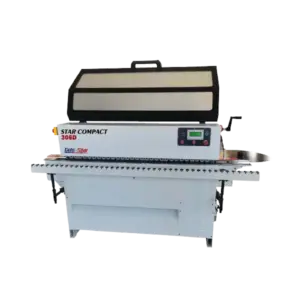
- /
- Woodworking & Cabinet Making
- /
- Edgebanders
INDUSTRIAL EDGEBANDERS
![]() Download Catalog
Download Catalog
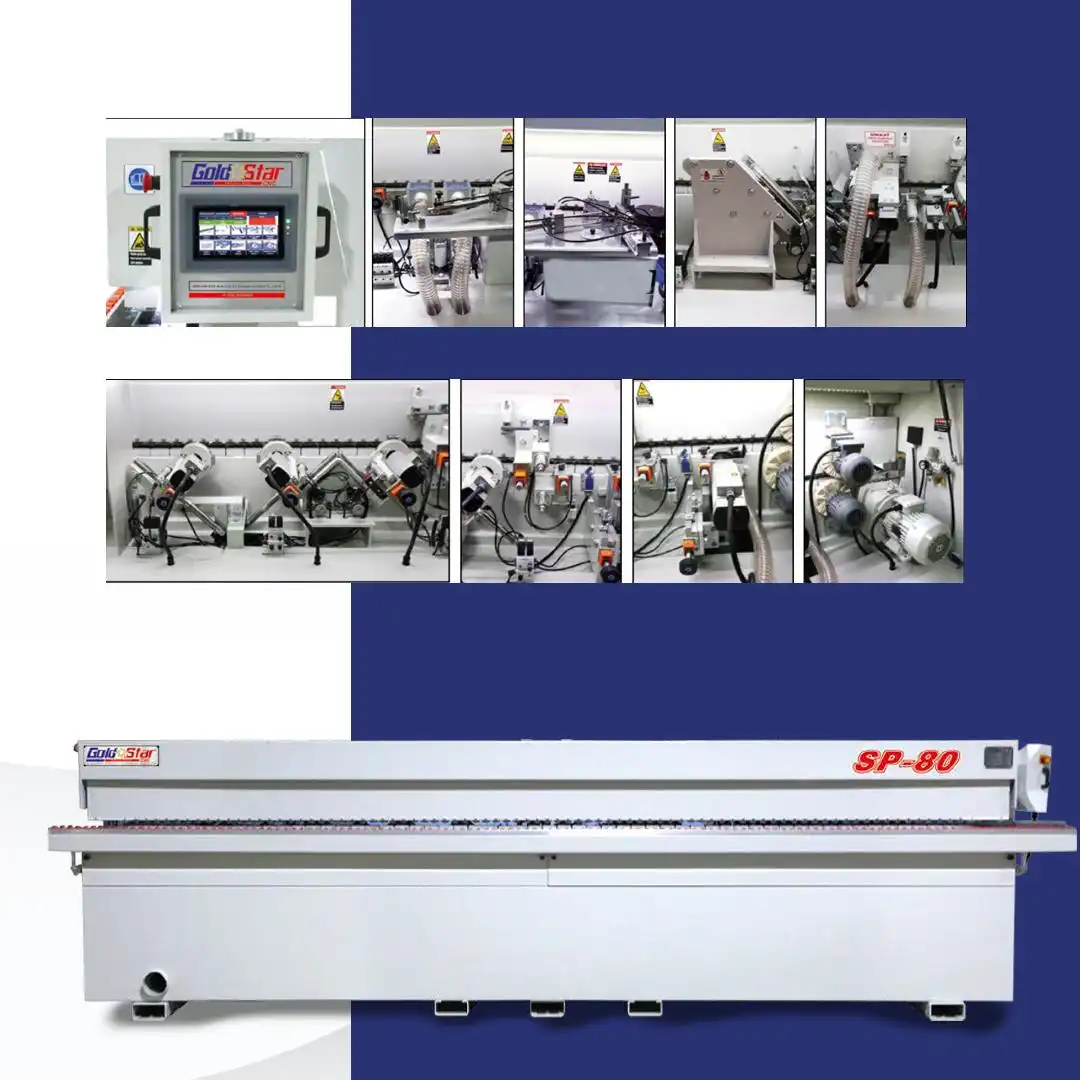
What do Industrial Edgebanders do?
How is edge banding done?
To begin the edge banding process, the operator prepares the edgebanding material by cutting it to the required length and width. The panel to be edge banded is also prepared by cleaning and smoothing the edges to ensure proper adhesion.
Next, the edgebander machine is set up and adjusted according to the specific requirements. The edgebanding material is fed into the machine, and the panel is positioned for edge banding.
The edgebander applies heat and pressure to activate the adhesive on the edgebanding material. The heated material is then pressed against the edge of the panel, firmly bonding it in place. The pressure applied ensures proper adhesion and eliminates any air bubbles or gaps.
Once the edgebanding is applied, excess material is trimmed off using a cutting unit or trimmer, resulting in a clean and flush edge. The trimmed edge is then smoothed and finished using various techniques, such as sanding or buffing, to achieve a seamless and professional look.
What temperature is needed for edge banding?
The temperature required for edge banding can vary depending on the type of edgebanding material being used. Different materials have different melting points, and the appropriate temperature setting ensures proper adhesion between the edgebanding and the panel.
For PVC edgebanding, the temperature typically ranges between 180°C to 220°C (356°F to 428°F). It is essential to follow the manufacturer’s recommendations for the specific PVC edgebanding being used, as different brands or thicknesses may require slight temperature adjustments.
For ABS edgebanding, the temperature is generally lower, ranging from 160°C to 200°C (320°F to 392°F). Again, it is crucial to refer to the manufacturer’s guidelines for the specific ABS edgebanding being used.
Wood veneer edgebanding, being a natural material, requires a lower temperature compared to synthetic materials. The temperature for wood veneer edgebanding typically ranges from 120°C to 160°C (248°F to 320°F). It is important to exercise caution and monitor the temperature closely to prevent scorching or damaging the delicate wood veneer.
It is recommended to consult the manufacturer’s instructions or guidelines for the precise temperature settings required for the specific edgebanding material being used. Additionally, some edgebander machines may have temperature control features that allow for precise adjustment and monitoring of the temperature during the edge banding process.
What are the pros and cons of edge banding?
Here are some of the most relevant pros and cons of edge banding so that you can evaluate the feasibility of this process in your work. However, you should consider that the advantages and disadvantages of edge banding can vary depending on the specific edgebanding materials, installation techniques, and individual preferences:
Pros of Edge Banding:
1. Enhanced Aesthetics: Edge banding provides a polished and finished appearance to furniture and wood-based products, enhancing their overall visual appeal.
2. Increased Durability: By protecting the edges against wear, moisture, and potential damage, edge banding improves the longevity and durability of the products.
3. Versatility: Edge banding is available in various materials, colors, and finishes, allowing for customization and versatility in design.
4. Cost-Effective: Compared to solid wood edges or other decorative options, edge banding is a more cost-effective solution for achieving a finished look.
5. Time-Saving: Edge banding machines automate the process, making it faster and more efficient compared to manual edge treatment methods.
Cons of Edge Banding:
1. Potential Visibility: Depending on the quality of the edgebanding material used and the installation process, the edgebanding may be visible and may not perfectly match the surface of the panel, affecting the overall aesthetic.
2. Limited Repair Options: If the edgebanding becomes damaged or starts peeling off, it can be challenging to repair or replace, requiring professional intervention.
3. Heat Sensitivity: Some edgebanding materials, such as PVC, are sensitive to heat and can be susceptible to melting or discoloration if exposed to high temperatures.
4. Edge Thickness Limitations: Edge banding may add a slight thickness to the edges, which can impact the fit of certain applications, such as doors or drawers.
5. Skill and Equipment Required: Proper installation of edge banding requires skill and specialized equipment, which may not be readily available to everyone.
More FAQs about Edgebanding Machines
What types of edge banding materials can be used with edgebander machines?
Edgebander machines can work with various materials such as PVC, ABS, wood veneer, melamine, and acrylic to match the desired look and durability.
Can an edgebanding machine handle different panel thicknesses?
Yes, most edgebanding machines have adjustable settings to accommodate different panel thicknesses, ensuring a proper fit and adhesion.
Are edge banding machines suitable for large-scale production?
Yes, edge banding machines are designed to handle both small-scale and large-scale production, making them ideal for various woodworking businesses.
What are some key features to consider when purchasing an edgebander machine?
Important features to consider when purchasing an edgebander machine include feed speed, glue application system, trimming unit, scraping unit, buffing unit, and overall build quality.
How do I maintain an edge banding machine?
Regular maintenance includes cleaning the machine, lubricating moving parts, checking and replacing worn-out components, and ensuring proper alignment.
GOLDSTARCNC provides its customers with a wide range of spare parts for a systematic planned maintenance of their edgebanding machines and other machinery so that their equipment always remains in optimum quality condition and production is never interrupted in their workshops.
Can an edgebanding machine produce different edge profiles?
Yes, some edgebander machines offer the capability to produce different edge profiles such as straight, beveled, chamfered, and rounded edges, enhancing design options.
Is training required to operate an edge banding machine?
While some machines are user-friendly and intuitive, it is recommended to receive proper training to ensure safe and efficient operation, especially for complex models.

